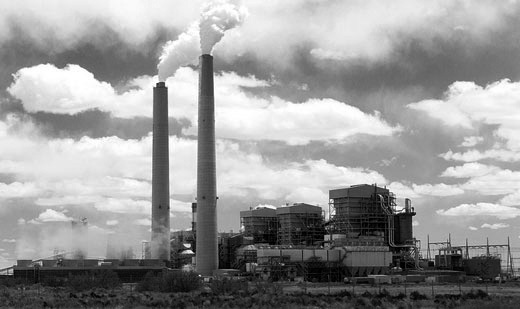
On February 25, energy giant American Electric Power (AEP) announced it would be shutting down three coal-fired power plants in Indiana, Ohio, and Kentucky after growing pressure and opposition by environmentalists. It will also be reducing pollution levels in 13 others in the Midwest and southern U.S., making this one of the first anti-fossil fuel victories this year.
AEP’s decision was partly a result of increasing activism against the pollution caused by coal-fired plants, but it was also the result of an agreement with a coalition of 13 citizens groups, eight states, and the Environmental Protection Agency in an effort to improve public health.
“Today’s agreement will protect health, reduce the threat of climate disruption, and create a cleaner environment for families in Indiana, Ohio, and Kentucky,” remarked Jodi Perras, Indiana campaign representative for the Sierra Club’s Beyond Coal campaign. “Across the country, the coal industry faces unprecedented setbacks as its share of electricity generation plummets and the cost of coal continues to skyrocket. This agreement is only the latest sign of progress as our country continues to transition away from dirty, dangerous, and expensive coal-fired power plants.”
Earthjustice underscored the importance of preserving health, noting in a report, “According to estimates from the Clean Air Task Force, 203 deaths, 310 heart attacks, 3,160 asthma attacks, and 188 emergency room visits per year will be averted once the power plants stop burning coal.
“We’re glad AEP is going to retire these aging dinosaurs, and [we] urge the company to ensure an equitable transition for the workers and communities most directly impacted by these retirements.”
The closing of these plants will also greatly reduce greenhouse gas emissions, cutting, according to the Environment News Service, 12 million tons of carbon dioxide and 84,000 tons of sulfur dioxide pollution each year going forward.
Many experts are taking these shutdowns as proof that coal plants are quickly becoming a dead end. According to a report by Science Magazine, coal plants are “struggling because many [of them] are aging to the point where parts break and they’re becoming expensive to maintain. Sixty percent of the nation’s coal plants are more than 40 years old, and the median age of coal plants retired in 2012 was 53 years. If the plants aren’t going to produce electricity for long, the cost of” merely modifying them to accommodate “newly implemented environmental regulations can be difficult to justify. It’s like hip transplants for coal plants.”
While some activists may lament the loss of jobs that may come from the plants’ closings, the development may also open a window for clean energy jobs instead. AEP, in fact, will be investing in new wind and solar investments in Indiana and Michigan.
“Across the Midwest and the Great Plains, in states like Iowa and South Dakota that already get 20 percent of their energy from wind sources, clean energy is powering homes, putting people back to work, and protecting families from dangerous and expensive coal-fired power plants,” said Kerwin Olson, executive director of Citizens Action Coalition of Indiana. “Indiana has one of the fastest growing wind industries in the nation and is creating thousands of local jobs.” AEP’s investments will “build on that success and will only accelerate Indiana’s and our nation’s responsible transition to an economy powered by clean, renewable, affordable sources of energy.”
Photo: squeaks2569/Flickr












Comments